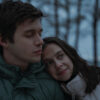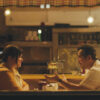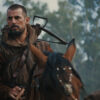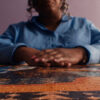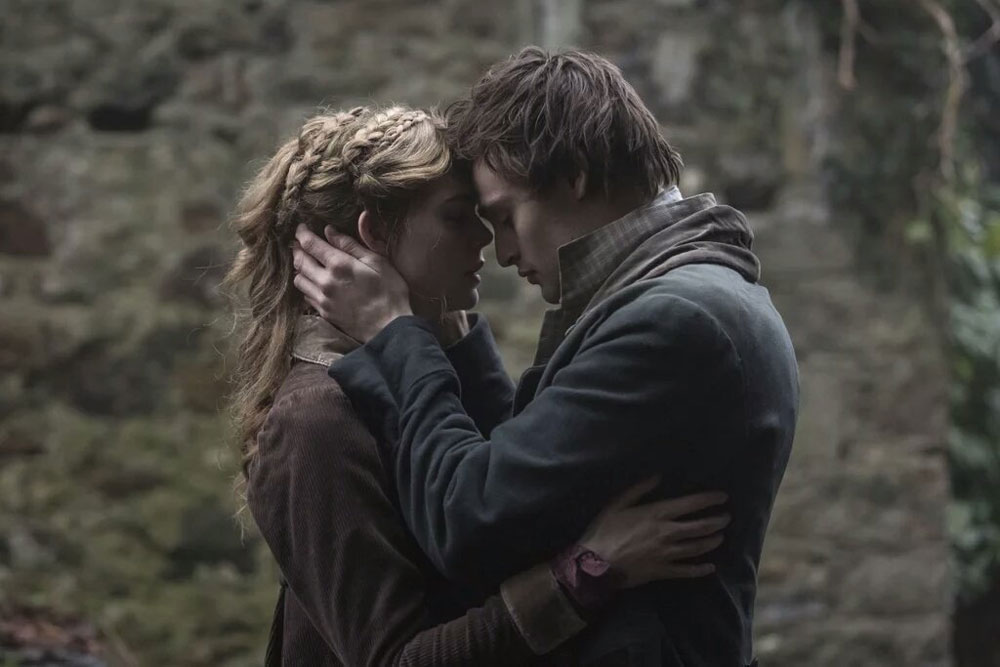Recently, Haifaa Al-Mansour was looking over the potential press stops for her latest film “Mary Shelley” when one particular date caught her eye.
“There was a star next to a couple days in Saudi Arabia in June,” says Al-Mansour, who found a way against all odds to make her directorial debut “Wadjda” in her home country, making history when the film became the country’s first official entry for the Oscars, though it remained illegal to screen publicly since the Islamic revival movement had successfully closed all theaters down in the 1980s. Still, the recognition of “Wadjda” was a small, meaningful step culturally towards recently opening the doors to a movie palace in Riyadh.
“That’d be cool,” says Douglas Booth, one of her “Mary Shelley” stars, sitting next to her as the two are doing press in New York during the Tribeca Film Festival.
“That’d be amazing!” Al-Mansour replies, with the kind of infectious enthusiasm that one imagines is why her films feel so alive, despite the fact that they’ve centered on stories of cultural repression.
Although “Wadjda,” the contemporary tale of a 10-year-old Saudi girl whose dream in life is to buy a bicycle for herself and have the freedom to ride around in the streets, may seem like a world away from England two centuries prior where the author of “Frankenstein” would come of age, Al-Mansour cuts the distance of both geography and time to show the societal structures that diminish women’s stature at every turn if left unquestioned, having been put in place generations earlier by men. However, even if the mere act of Al-Mansour harnessing the resources to make a film wasn’t a statement in itself, having grown up in an ultra-conservative community where films, and careers in general for women, were a pipe dream, the filmmaker has an unshakeable ability to bring out the rich inner lives of the young women in cinematically dynamic ways, turning their restlessness into propulsive creative energy.
With “Mary Shelley,” Al-Mansour and co-writer Emma Jensen hone in on Mary Wollstonecraft Godwin’s teenage years, where she first found inspiration for her famous monster. Vividly portrayed by Elle Fanning, one can see how she might’ve thought of a mercurial and often misunderstood giant as she’s subjected to the whiplash of men who nurtured her literary passion, whether it was her father William (Stephen Dillane), a bookseller, or the poet Percy Shelley (Douglas Booth) that she would come to marry, yet would come to disappoint her when encouragement meant allowing her to become her own person. A trip to Lake Geneva at the estate of Lord Byron (Tom Sturridge) with Percy and her half-sister Claire (Bel Powley) lights a match when a party game of creating a scary story leads Mary to put finally pen to paper about the creature that had been stirring inside of her, but while her fiction induces screams, her real life triumph becomes breathtaking, taking the world by storm with just her notebook.
After premiering last fall at the Toronto Film Festival, “Mary Shelley” couldn’t have more fortuitous timing for its U.S. release, arriving in theaters as an amplification of women’s voices is in full swing thanks to the #MeToo movement and shortly before the film made its stateside premiere at Tribeca, Al-Mansour and Booth spoke about battling climates of all kinds to bring Shelley’s story to the screen, coordinating a multinational shoot and finding the drama in a story as much about reaction as action.
Haifaa Al-Mansour: I’d just finished touring with “Wadjda” and I met the producer Amy Baer. I loved the script and that it’s about a young girl trying to find her voice. I felt that it is a story that I’m passionate about and I want to tell, even if I come from a very different place. I sympathize with her story and then after we cast Elle, we were trying to find Percy and it was a search all over until we met [Douglas], who had this amazing energy. He is very handsome…[laughs] But he also has this nervous energy that [where] you can imagine as a kid, but you can see him as a man. He has a playfulness that is amazing. We had him meet with Elle and the energy in the room was wonderful.
Douglas Booth: That’s probably why I got cast. We had this great energy together. But they sent me the script and there were three incredible women attached – Haifaa, Elle and Bel Powley, so [it was] two of the most talented actresses of their generation, and I was super excited [about Haifaa] because I absolutely love “Wadja” and I thought she was the perfect person to tell this story. She had, in her own way, a very similar journey to what Mary Shelley had to go through to fight a lot of things in society at the time, so I thought she was the perfect person to tell this story.
Haifaa Al-Mansour: And [that energy between Douglas and Elle] clearly showed up on the screen. A lot of those scenes that they were arguing, we spent plenty of time to choregraph and it was amazing to see them coming together, almost like a dance because they’re beautiful.

Haifaa Al-Mansour: A lot of people describe [“Frankenstein”] as masculine, but it is really the result of everything she went through as a woman – of losing a child and being with a husband who has that great persona and she could not contain him. Those themes are all present in [“Frankenstein”], but the relationship was not really explored between her life and writing the book and I wanted to reclaim that as a woman because you always see the monster, and for me, it was really sad not to understand that it is a direct result of her life.
Douglas Booth: All these things [were what] created the narrative for her book and she was writing about the experiences she had around them, so you couldn’t take any of these components out and just focus on her because the things that happened to her is what helped her create the work. At the end of the day, what I think is important is that we learn that it was solely her creation out of destruction.
Douglas, was there anything that helped you figure out who Percy was?
Douglas Booth: There was a great biography about him that was about 800 pages that I read just to get a sense of what made him the radical free-thinker that he was and then there’s his poetry, which is so beautiful, but I had to do a bit of work on how to speak the poetry, to deliver that, so I worked with this young Egyptian poet — I didn’t want to work with some English scholar who was going to make me say it in a boring way, so this young Egyptian poet was brilliant and helped me with the spoken word. And what I found so interesting is with the great work of his poetry and the great work of “Frankenstein” [is that] all the tragedy and all the ideals that didn’t quite work [for him] and could not be upheld was what created the truth and I think that’s what we wanted to explore in the film.

Haifaa Al-Mansour: Yes!
Douglas Booth: Yes, I did. I’ve been doing this thing for the last couple films where I create a smell for each character. When I’m researching and rehearsing, I log a lot of stuff onto the emotional response to the smell and for Percy, it’s probably one of my best ones I’ve created because [it’s like] when there’s a storm and it hits dry earth, there’s that smell when it’s just rained, I thought that was the perfect energy for “Shelley.” But I just walked around stinking of the stuff, didn’t I?
Haifaa Al-Mansour: [laughs] No.
Haifaa, the last time we spoke, you had just emerged from filming a good deal of “Wadjda” inside a van since you couldn’t go outside to shoot exteriors. What’s it like to be able to build a big world like this and create sets?
Haifaa Al-Mansour: It’s amazing. It’s wonderful not to be in a van. [laughs] It’s wonderful not to worry about censorship and all that and just be engaged with the art. I was very grateful for that moment, enjoying the freedom as an artist and just connecting with the actors. I’ve always worked with nonprofessional actors and it’s amazing to work with professional actors because they come with their own set of tools and elevate the storytelling. Sometimes I’m just baffled at what they do on set. It’s like, wow, it’s amazing. But we had our set of challenges filming across Europe. The weather we filmed in was really cold and…
Douglas Booth: Yeah, we really battled the weather, didn’t we?
Haifaa Al-Mansour: Yeah. Elle and Bel had to run under the rain [during certain sequences] and it was freezing in February.
Douglas Booth: Snow on the ground.

Douglas Booth: The one that sticks out to me is in the mother’s graveyard, we had a scene where Percy meets Mary there and it was raining so hard. Everyone was sick and and we were about to do this really romantic scene and it was so muddy. I remember Haifaa there with this poncho, she’s just there with a poncho over her head there and a little monitor, just watching the sides [excitedly], “Right, you rehearse this scene.” [laughs]
I understand the shoot was spread across Ireland and Luxembourg – was that a challenge in terms of keeping the energy at a certain level?
Haifaa Al-Mansour: The power of young people! It’s amazing to be around them. I felt young. [laughs] The real challenge is having a coherent look across because we even shot in France because Luxembourg has a rule that you can go 13 miles off the border into a neighboring country, you still qualify for rebate. And bringing in a look that is coherent and cohesive for the film was very challenging. We had an amazing art department that pulled it off beautifully.

Haifaa Al-Mansour: Definitely we wanted it to feel modern because it’s a modern story for a woman to be intellectually dismissed – it is something that we still face and we wanted for the story to resonate with people now. We didn’t want it to feel far removed as a period piece that happened only in the past.
This premiered in Toronto just before the Weinstein scandal set off a wave of reckoning for women. Has it changed your thinking about what this film is, in terms of elevating a woman’s voice?
Douglas Booth: Perfect timing.
Haifaa Al-Mansour: It’s wonderful for the film to come now when people are really recognizing women’s voices. Time’s up, right? It’s about time now that people give women what they deserve and I think “Mary Shelley” is one big underestimated artist. Her book overtook her and we never knew her, so it is an amazing time for her to come now and be acknowledged with the film, I hope.
“Mary Shelley” opens on May 25th in Los Angeles at the Monica Film Center and in New York at the Quad Cinema. It will be available on demand on June 1st.
